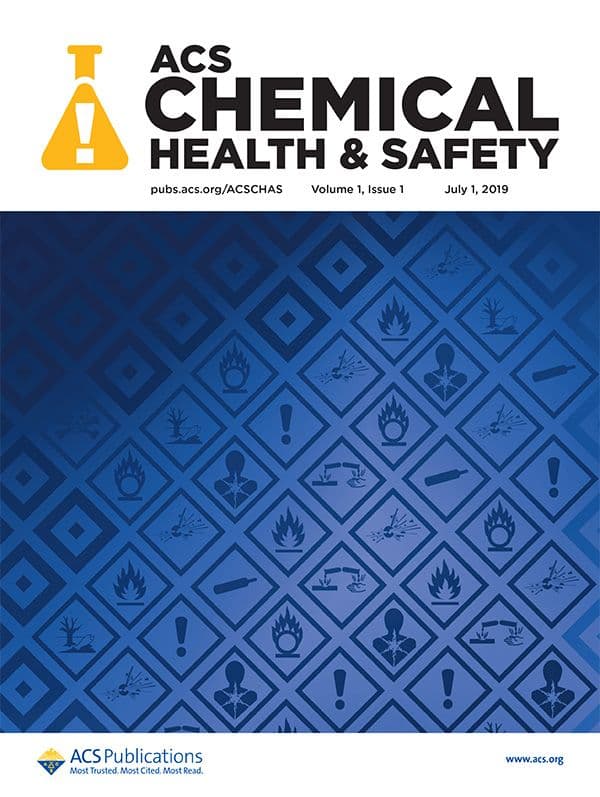Sharps are often used in the chemistry lab, but represent a risk of puncture wounds or chemical exposure. Yet information about their proper usage – and prevention of injuries – remains scarce in the literature. A new report published in the journal, ACS Chemical Health & Safety, promotes safe techniques for the use of needles […]

Sharps are often used in the chemistry lab, but represent a risk of puncture wounds or chemical exposure. Yet information about their proper usage – and prevention of injuries – remains scarce in the literature. A new report published in the journal, ACS Chemical Health & Safety, promotes safe techniques for the use of needles and cannulas in chemistry.
In 2018, a student working at the University of Lyon pricked his finger on a syringe containing a few residual drops of dichloromethane.1 Unlike the needle pricks received in classic fairy tales, this resulted in necrosis, and the need for emergency reconstructive surgery. The incident also prompted a call for safety updates in chemistry labs. A new paper published in ACS Chemical Health & Safety sets out some guidelines for safe management, and tips for developing a good safety plan and risk assessment.2
The World Health Organization estimates there are over 2 million needlestick injuries every year among healthcare workers,3 but data are not widely available for chemistry research labs, despite the frequent use of sharps such as cannulas and needles for chemical transfer. In the healthcare setting, needlestick injuries pose an infection risk, but in the lab there is an additional risk of exposure to dangerous chemicals. Retrospective data from one institution suggest cuts, lacerations, and punctures account for the largest proportion of laboratory injuries (32%), while chemical exposure accounts for another 19%.4 Another study reports up to 30% of scientists in academic chemistry labs have witnessed a work injury severe enough to need medical attention.5
Stainless-steel cannulas and needles provide an enclosed system for the safe manipulation of air-sensitive, pyrophoric, or toxic chemicals. Needles and cannulas are also used in gas chromatography and high-performance liquid chromatography applications. Inadequate situational awareness has been identified as one of the primary causes of accidents attributed to human error. Injuries caused by sharps in the lab typically reflect inadequate training around chemical transfer procedures, and incorrect recapping, storage, or disposal. Thorough planning can reduce injuries and exposures incurred by students and researchers. With this in mind, safety plans should include hands-on training, a standard operating procedure, and information about any engineering controls. An appropriate risk assessment may also identify alternative transfer methods that are safer than needles and cannulas.
Preventing injury requires situational awareness which is achieved by using proper techniques and a proper reaction set up, performing a risk assessment, and having group discussions about the risks within the context of the overall experimental procedure.
Tips for safe handling of sharps in the lab:
- Assemble glassware inside a functional and uncluttered fume hood before transferring chemicals with a needle or a cannula.
- Only use new disposable or clean reusable syringes and cannulas.
- Methanol, acid water, deionized water, or acetone work well for cleaning.
- Cannulas may also be cleaned using a vacuum or nitrogen pressure.
- Inspect syringes and needles before use for leaks or clogs.
- Use the correct size, and avoid using needles that are bent.
- Never apply excess force while uncapping a needle.
- Needles should not be recapped, bent, removed, or otherwise manipulated by hand.
- If a needle must be recapped, use a mechanical device or a one-handed scoop method.
- Be attentive when using sharps in the glovebox to avoid puncturing the gloves.
- Avoid plastic syringes for chlorinated solvents.
- Use syringes only for transfers <50 mL, and take special precautions when transferring pyrophoric chemicals.
- Syringes should be filled at less than half capacity so the plunger does not accidentally come out.
- When transferring chemicals that are air- or moisture-reactive, use a cannula or syringe only once for a single transfer; multiple transfers should use fresh transfer equipment.
- Store protected needles and cannulas in their appropriate lab drawer.
- Collect all disposable needles in a heavy-duty sharps container, and never overfill.
References
- Vidal S. Safety First: A Recent Case of a Dichloromethane Injection Injury. ACS Central Science 2020;6(2):83–86.
- Chandra T, et al. Safe Handling of Cannulas and Needles in Chemistry Laboratories. ACS Chem Health Saf 2022;29(2):175–183.
- World Health Organization (WHO). Needlestick injuries. 2019; Available from: https://www.who.int/occupational_health/topics/needinjuries/en/.
- Gosavi A, et al. A retrospective analysis of compensable injuries in university research laboratories and the possible prevention of future incidents. J Chem Health Saf 2019;26(2):31–37.
- McLeod RW. Approaches to Understanding Human Behavior When Investigating Incidents in Academic Chemical Laboratories. ACS Chem Health Saf 2022;29(3):263–279.
